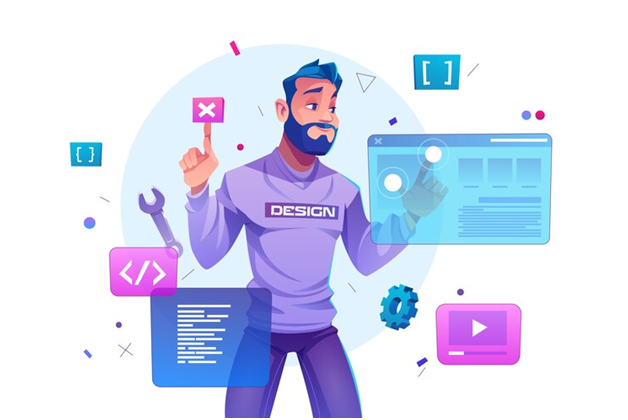So, there seems to be a bit of confusion about what the difference is between web design and web development. The best way I can think of describing this is that web design is pretty much making an image for the presentation display of a website whilst web development makes sure the back-end works as it should. In reality, though there are often a lot of crossovers so maybe the best way to think about this is that web design is making your site look pretty, whilst web development makes sure it works properly.
What is Web Development?
Web Development is the specialization of development that focuses on the web, typically for third-party software engineers who are not web designers or programmers. Web developers create custom applications for people or companies that are accessible through browsers. The three main technologies used by web developers are JavaScript, HTML, and CSS. These three languages are based on programming language syntaxes, but they do not actually make any computer-based logical decisions. Rather, each one creates an effect within a browser that gives the user an interactive experience with data that has been uploaded to a server where it can be accessed from other sources. While these three languages make up the bulk of web development, there are also several other technologies that web developers can use to build their projects. Many modern websites now integrate chat systems and social media logins as well as interactive elements like an image gallery and video players.
Web development is the activity of building the web pages that make up an Internet site, including both backend (server) and front-end (client) components. Web developers mostly work with content management systems, allowing them to develop ways for administrators to edit page content dynamically; but they can also write or extend other types of dynamic web applications like eCommerce sites, enterprise portals or custom web applications. One popular website framework used by developers working on many different projects is Ruby on Rails. Alternatively, PHP has gained popularity alongside Python in modern web development due to its relative simplicity compared to other server-side languages and compatibility with many database platforms. Another factor influencing this shift towards PHP was the availability of open-source content management systems that would work with the framework, such as WordPress, Joomla, and Drupal.
What is Frontend vs. Backend?
Front-End development refers to all aspects of creating a web page or application that are visible to the end-user. The front end interacts with end-users and relies on both external data sources, for example, APIs, as well as internal data structures like databases, business logic, etc., in order to generate its content. This often involves HTML, CSS, and JavaScript rendering these items on the browser side. On smartphones or tablets, this also includes native functionality exposed by device APIs. It is frequently abbreviated “F” (more commonly in the past), “front-end”, or even “the front” but can simply be referred to as “client-side”. This is opposed to the backend, which are the computing operations that are not seen by users.

What is Web Design?
Web design is the activity of designing a website or app for the Internet, with an emphasis on visual aesthetics and overall user experience (UX). The actual HTML code that makes the page work is usually done by a front-end developer because it requires programming knowledge. But designers will have ideas about how everything should look, how it should flow from section to section, what kind of images go where etc., so they’ll be able to convey those ideas to a developer in a way that they’ll be able to implement in the code.
Web design is about creating an aesthetic composition of elements on the page – essentially graphic design for the Internet. That includes typography, colors, layout, etc. Text content will often be written by copywriters who are not involved in actually making the website function, but moreover for example writing blogs or news stories that are intended to inform readers. However, some web designers do write this text themselves if it’s necessary that they have more control over what goes into their site. Web design does not generally include writing code or making decisions about how a website should work.
There are many different specialisms within web design, including graphic design, interface design, usability, and user experience (UX) design. These include the look of a site or app and how it works, respectively. UX relates to what happens when users interact with a website – whether they find what they need easily and quickly, how easy it is to navigate around etc., whilst layout and interaction issues might fall under the heading of “interface design”. Graphic designers tend to see themselves as working on branding rather than functionality. You can outsource a front end development agency to design your website for you.
What’s the difference between web design and web development?
The distinction between these two terms can get blurred – communities of practice have adopted the term Web Designers for people who make websites, but it can be confusing because often developers are also designers. Generally speaking though, you need both a designer and a developer to make a website – someone has to make it look nice and someone has to make sure it works properly. That said, there are some parts of other specialisms that may overlap into what we think of as being design or development work for example front-end developers will sometimes need to know graphic design principles in order to implement certain visual effects etc. whilst some skills involved in graphic design are relevant to making websites work well on mobile devices.
Conclusion
By understanding what is the difference between web design and development, one should be able to develop an appropriate strategy for their website or app. The steps should include clearly defining the ideation process and laying out the blueprint of the website and finalizing resources to develop the site. It is also important to prepare a framework that could accommodate interactive content driven by user-generated data. Such a framework should also be scalable for future growth.

